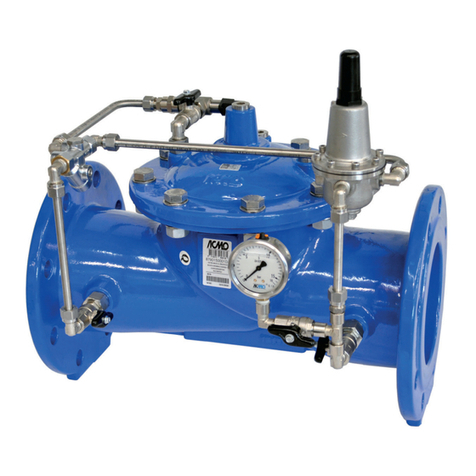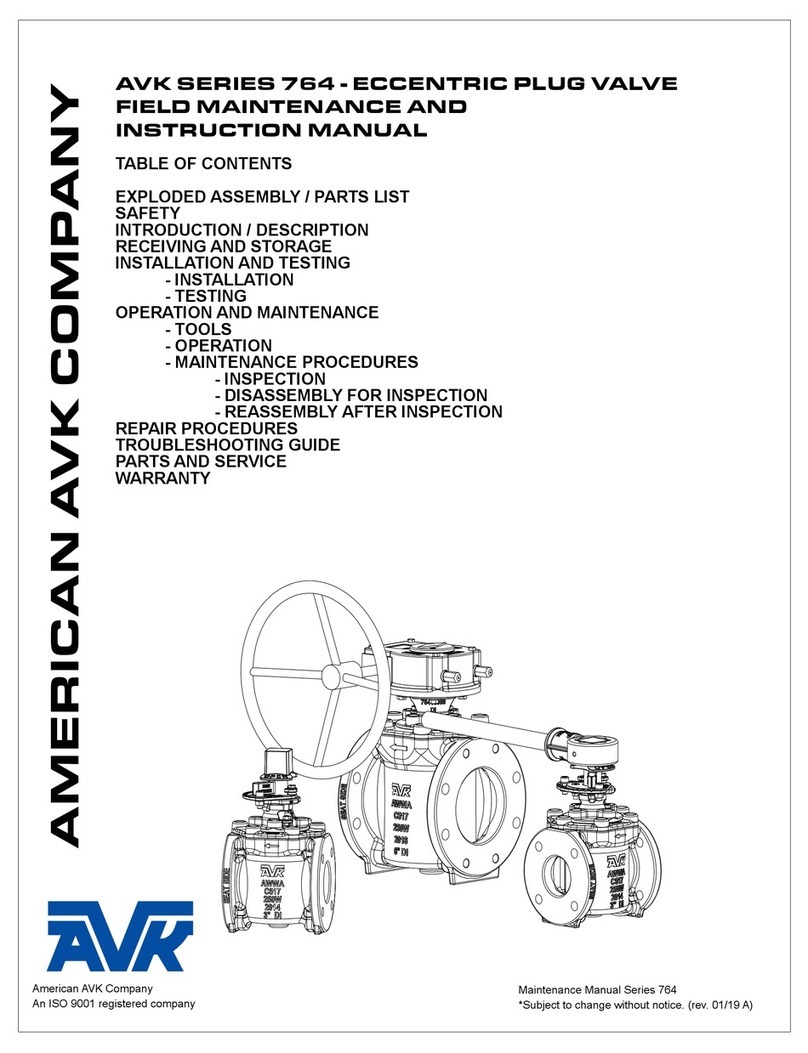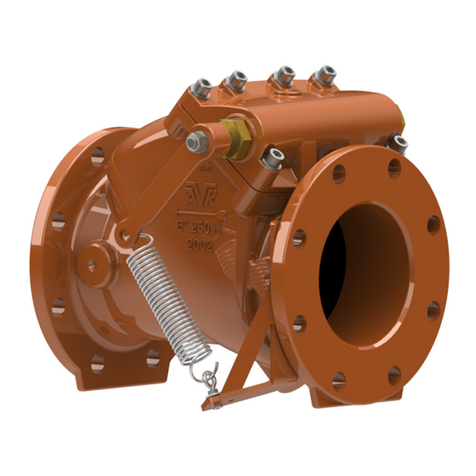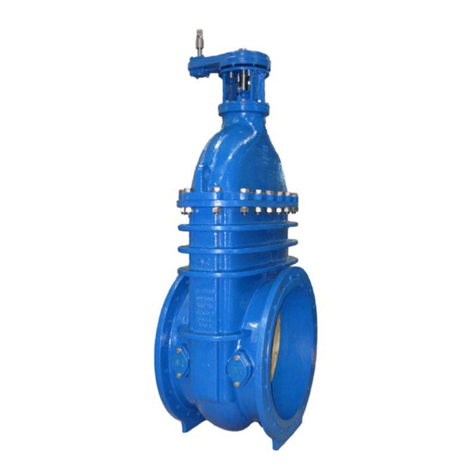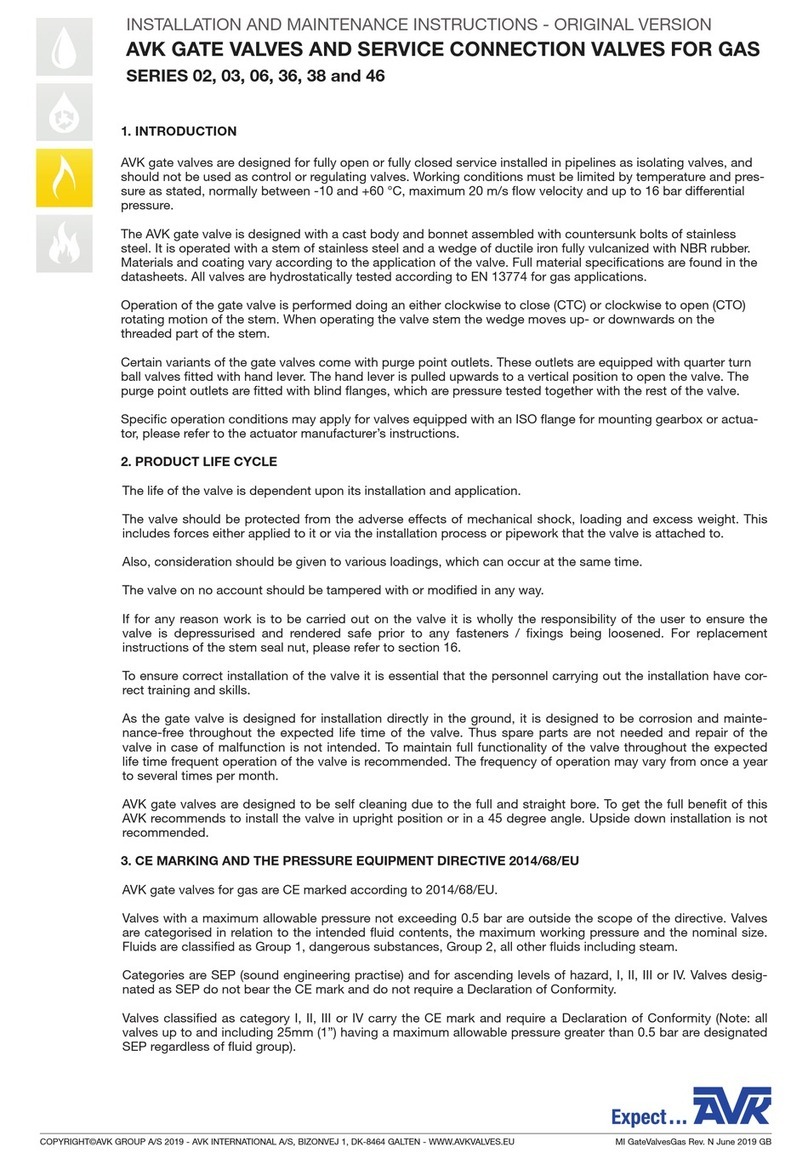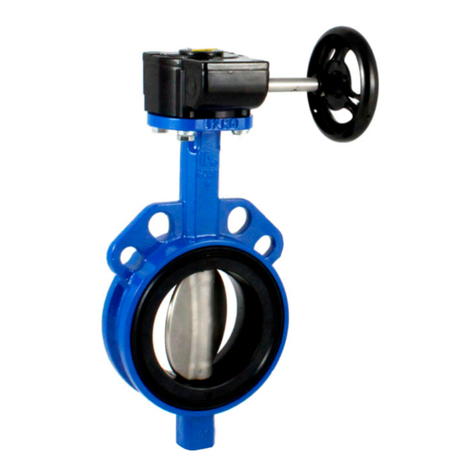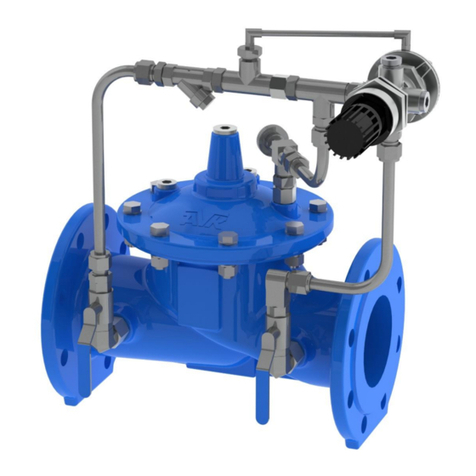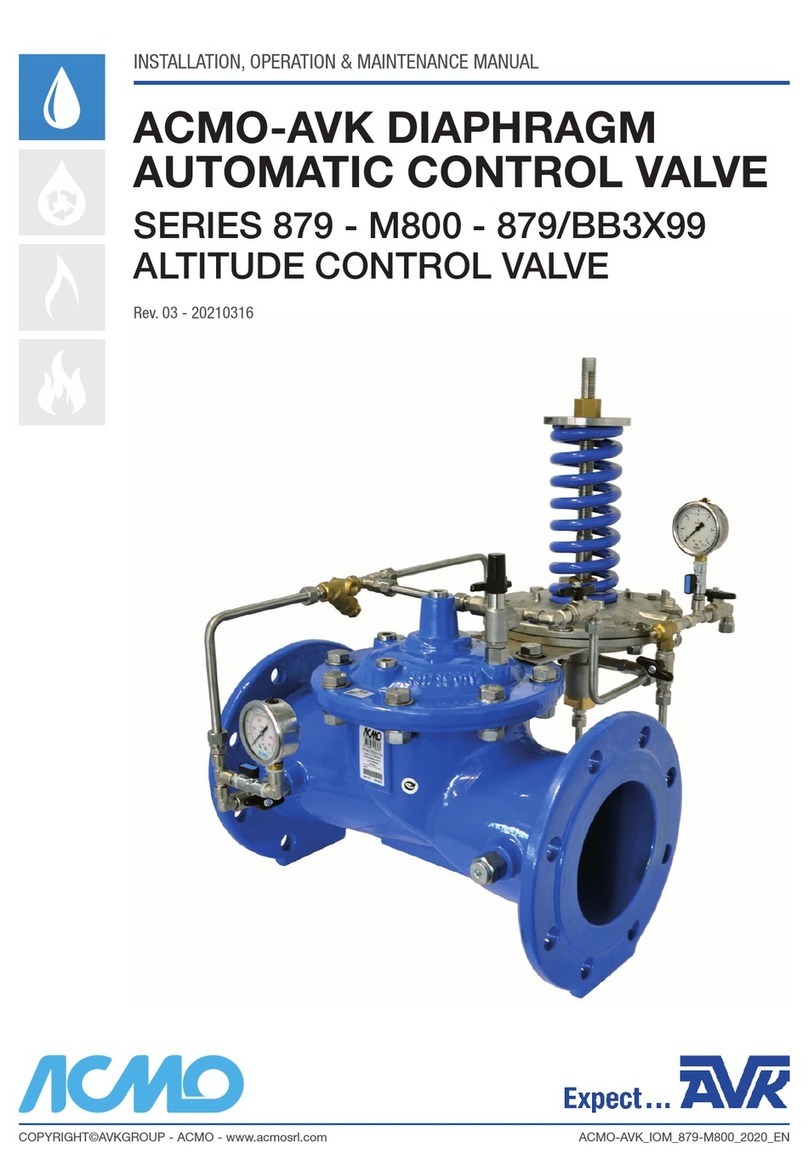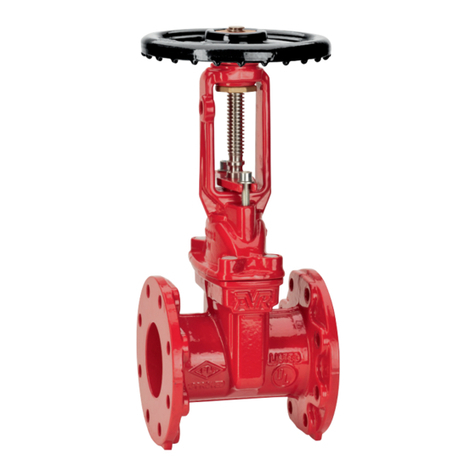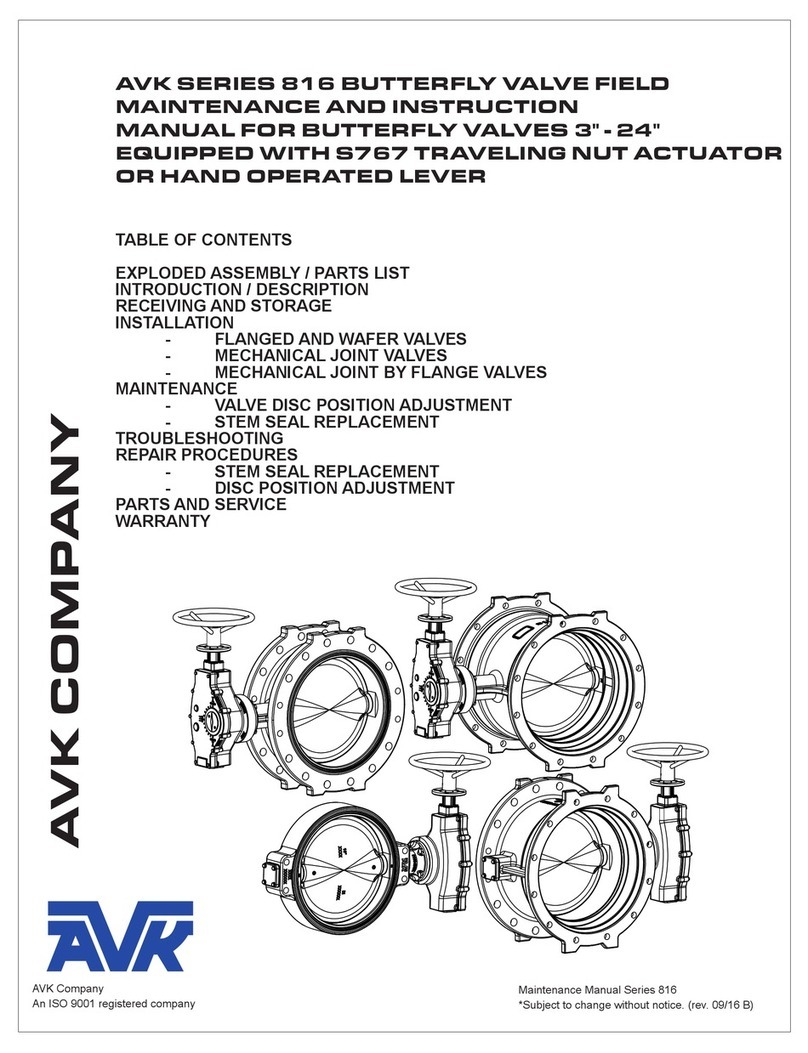
Page 5 of 12
Copyright © AVK Holding A/S, original version, rev. 2, 30-Oct-2019
4. Principle of operation
The valve is an ordinary gate valve with a wedge completely encapsulated in rubber that
provides the soft seal. However, instead of having a rotating stem providing the vertical
movement a pneumatic cylinder is fitted. A 5/2 solenoid valve on top of the cylinder controls the
opening and closing of the valve.
5. Health and safety at work
Make sure all relevant Health and Safety issues and regulations are adhered to prior to and
during installation or maintenance work carried out on this product. It is the end user's
responsibility to ensure that safe working practices are followed at all times.
Whenever AVK’s products are installed, operated or maintained the inherent dangers of
pressurised liquids and gasses must be addressed. Before work on a valve or other piping
component is undertaken, that may involve the release of internal pressure, the valve or line
must be fully isolated, depressurised and drained prior to commencing the work. FAILURE TO
COMPLY WITH THIS MAY RESULT IN SEVERE INJURY OR DEATH.
All workers handling the product must be aware of the weight of the components or assemblies
to be handled and manipulated during installation and maintenance.
It is essential that staff undertaking these operations are adequately trained and it is the
responsibility of the end user that only trained and competent staff undertake these duties.
This manual has been designed to assist, but it cannot replace quality training in the workplace.
However, the AVK technical staff is always available and ready to answer questions relating to
specific problems that may not be covered by this manual.
AVK’s products are designed to be fit for purpose and to a high reliability standard. This
provides a safe, low risk product when used correctly for the purpose for which it was designed.
However, this assumes that the equipment is used and maintained in accordance with this
manual, and the user is advised to study it and to make it available to all staff that may need to
refer to it.
AVK cannot be held responsible for incidents arising from incorrect installation, operation or
maintenance. The responsibility for this rests wholly with the end user.
6. Receiving and storage
6.1 Unloading
Unloading must be carried out carefully. The load must be put gently to the ground without
dropping. Lifting by means of a crane or any other lifting device should only be done using the
flange holes, lifting eyes or appropriate straps. Never suspend the valve in the actuator.
If a forklift is used it shall have sufficient capacity to lift the required weight and have a valid
inspection certificate.
All workers involved in the unloading shall be able to perform their functions. They shall wear
safety boots, safety vest, safety goggles and hard hat.
All slings used for the lifting shall be of sufficient strength. A record shall document that they
have been stored under cool, dry conditions away from sunlight and chemical atmosphere, and
that they still perform according to their marked strength.


